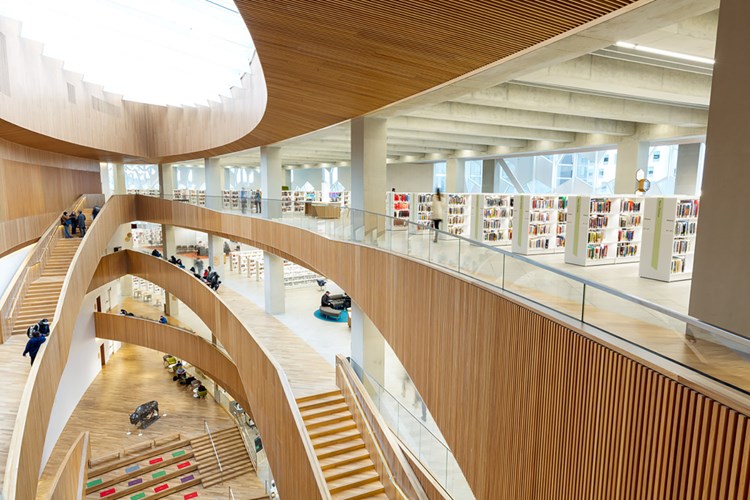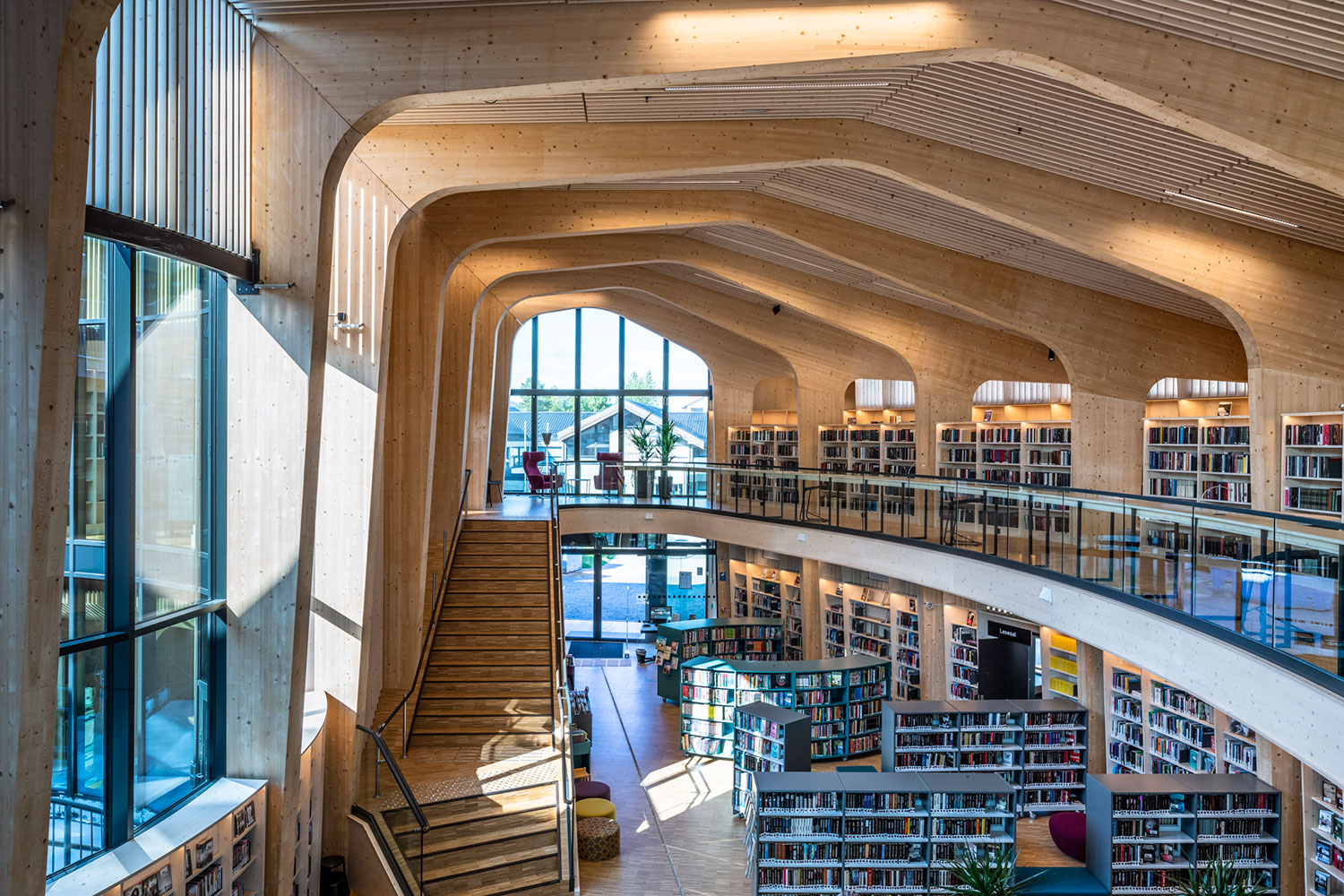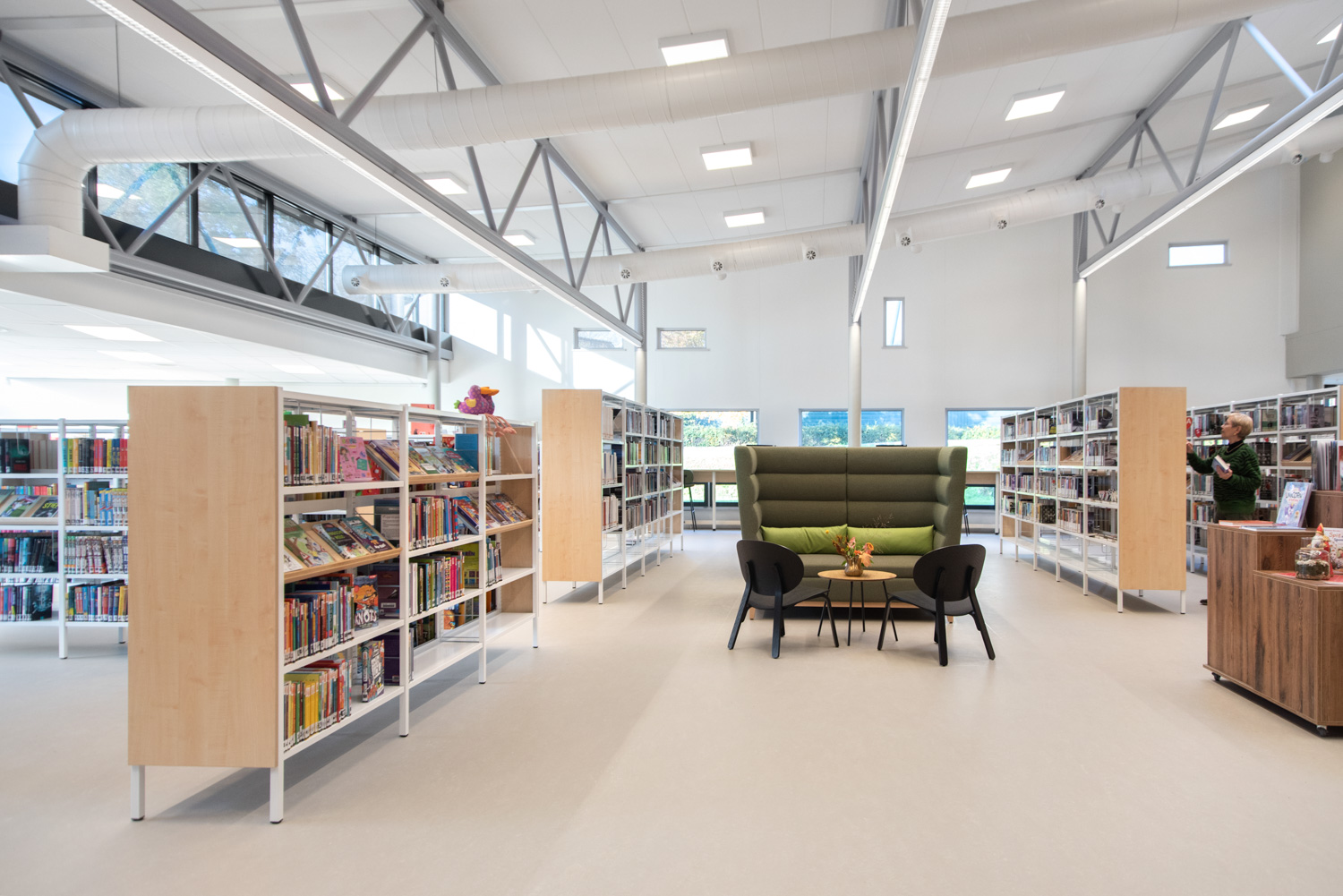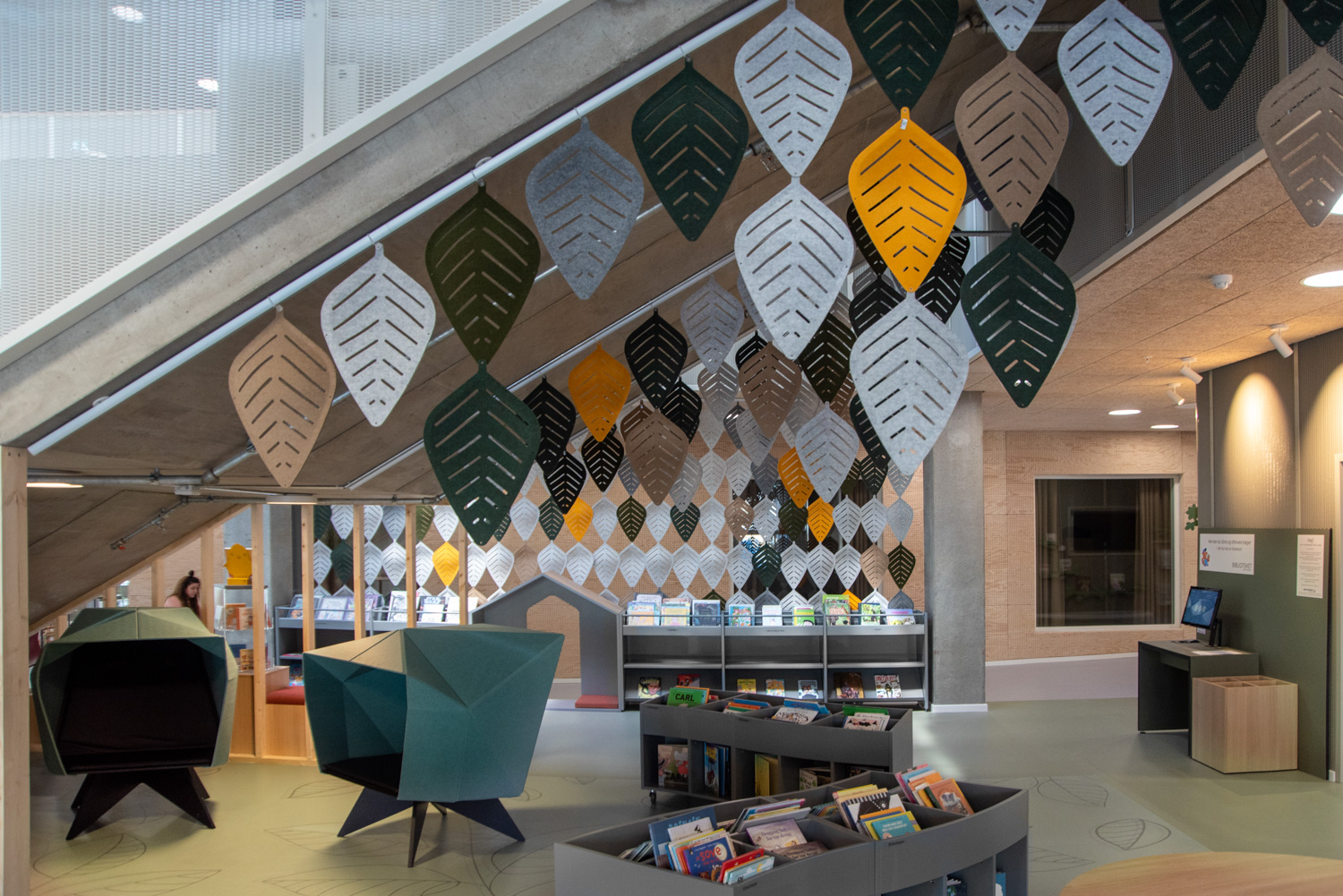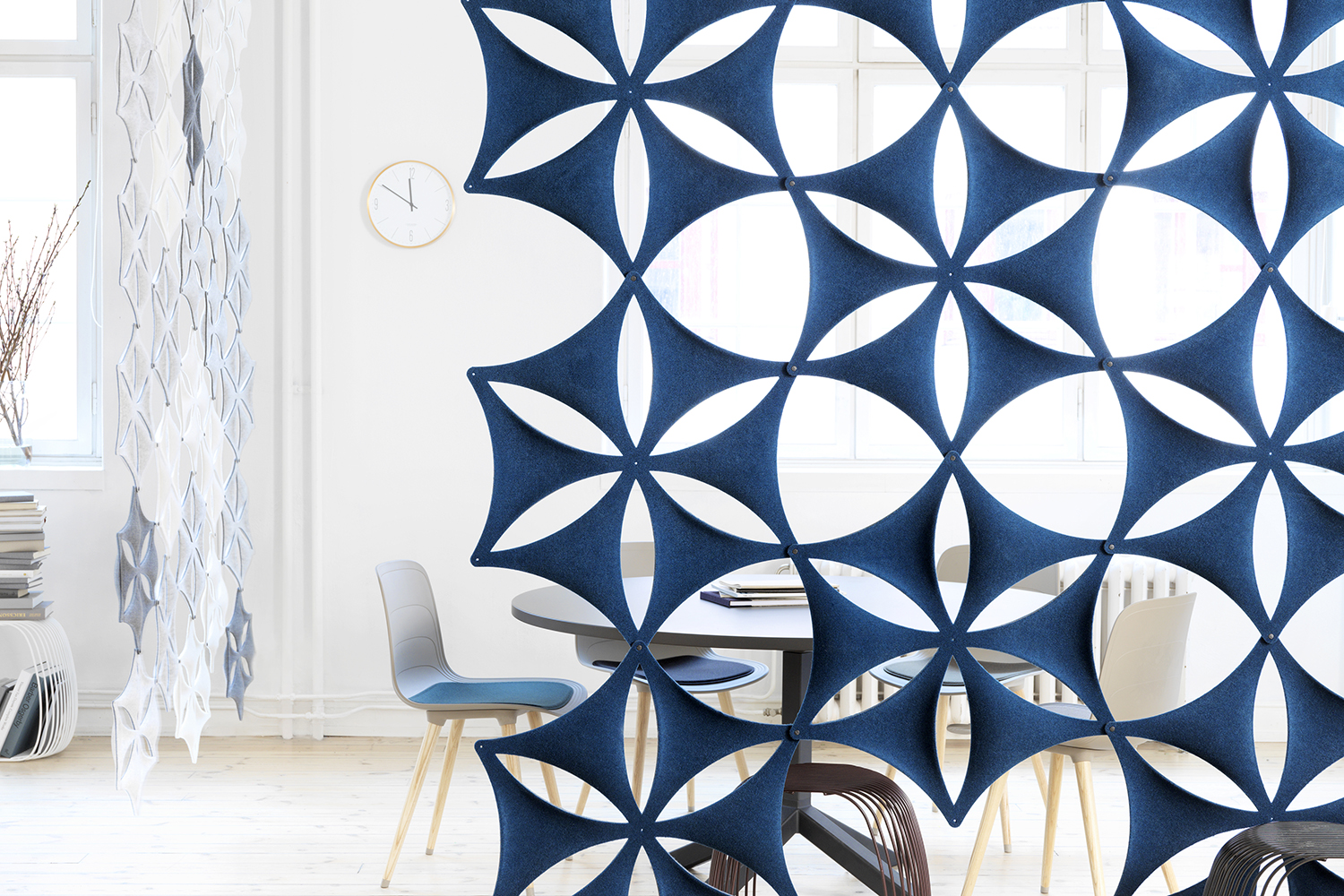Biophilic library design - Materials and patterns
Natural shapes and forms
A well-executed biophilic design can be accomplished by conscious building material as well as leveraging the natural landscape and building around what is already there. Materials, shapes and forms rooted in nature can cause very strong emotional responses.
E.g., several of our projects are built in wood and utilizes the aesthetic grandeur of nature-inspired materials. The shapes and patterns of the wooden material create a unique addition to the biophilic library design which is further supported by longevity.
Natural materials can be especially stimulating, reflecting the dynamic properties of organic matter in adaptive response to the stresses and challenges of survival over time. Prominent natural building and decorative materials include wood, stone, wool, cotton, and leather used in a wide array of products, furnishings, fabrics, and other library designs.
Natural materials and landscapes
Walls, floors, ceilings, and stairs form the majority of surfaces of libraries. When looking to incorporate biophilia into the interior and overall design, wood is an obvious choice. The versatile material distinctly reflects the natural environment, whilst achieving a contemporary look.
Wood has a rich aesthetic appeal, and the soft and organic forms provide a warm and soothing effect for those who visit the library. Often, the natural texture of wood is the first thing people notice when entering a building, and our brains subconsciously link wood to trees and trees to life and nature, triggering a comfortable and stress reducing reaction.
Several of these library projects where we have taken on the complete interior design effectively demonstrates this mix of biophilic landscapes with wooden architecture throughout the buildings.
Wooden materials
The wooden shelving systems and study tables provide a beautiful and warm contrast to the rest of the buildings in Wateringen Public Library, Netherlands and Esbjerg Hospital, Denmark creating an impression and association to outdoor life. Natural light flows through the rooms and green-coloured furniture contributes to the biophilic atmosphere.
Biophilic architecture
The soft shapes and patterns of the wooden material in the library buildings of Nesodden Public Library, Norway and Calgary Public Library, Canada create a unique addition to the biophilic library design which is further supported by longevity.
Nature inspired textures and patterns
Leaf patterns, wood grain and snowflakes are just some examples of fractal patterns in nature. Fractals are patterns in nature created by repeating shapes in different scales, where the individual part resembles the whole.
Fractals have been proven to have a calming effect, and there are endless ways of incorporating them in library interiors, from wall decorations to nature-inspired carpets. Fractal textures and patterns add dimension and depth and will make any library space feel warmer and more welcoming.
Feel the grass beneath your feet or touch the pretty snowflakes… There are lots of ways to bring out the nature inspired textures!
Fabrics and textures resembling nature
One of the impressive aspects of nature is the different structures, shades, colours, and textures where not even one element is alike. While Scandinavian design is known for its pure and simple look, nature is known for variation.
In our interior designs, we often use mélange fabrics that contains much more than meets the eye. E.g., a fabric can appear blue at first, but when you look closer it can also accommodate pink, purple, and green. Just like nature, they might surprise you!
Several of our fabrics and textures resemble and feel like natural elements and surfaces such as stone, soil and sand. It can be rough or smooth, hard or soft. Patterned fabrics depicting nature are also a strong way to enhance biophilic design.
When designing biophilic environments in libraries, the fabrics and textures must fit the overall theme and additional furniture to support pleasant emotions and a feeling of being one with nature. We carefully consider different fabrics and textures in each project.
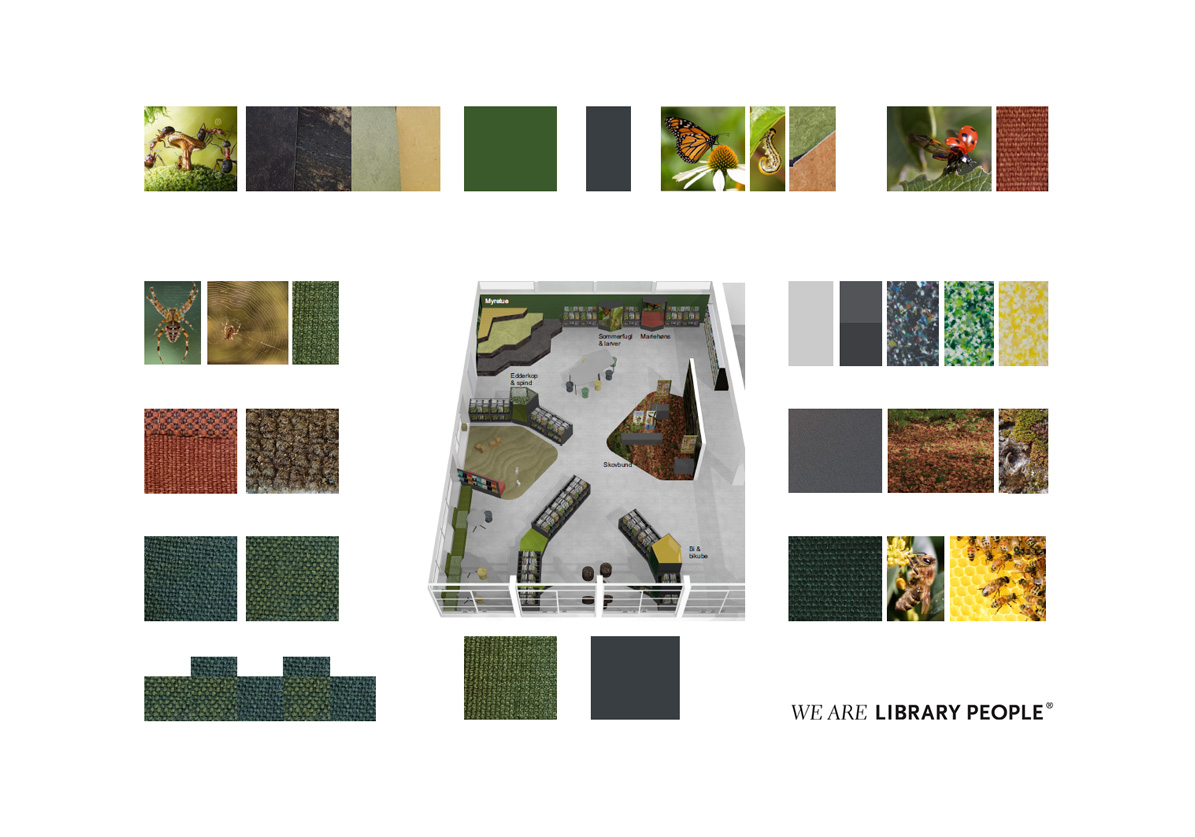
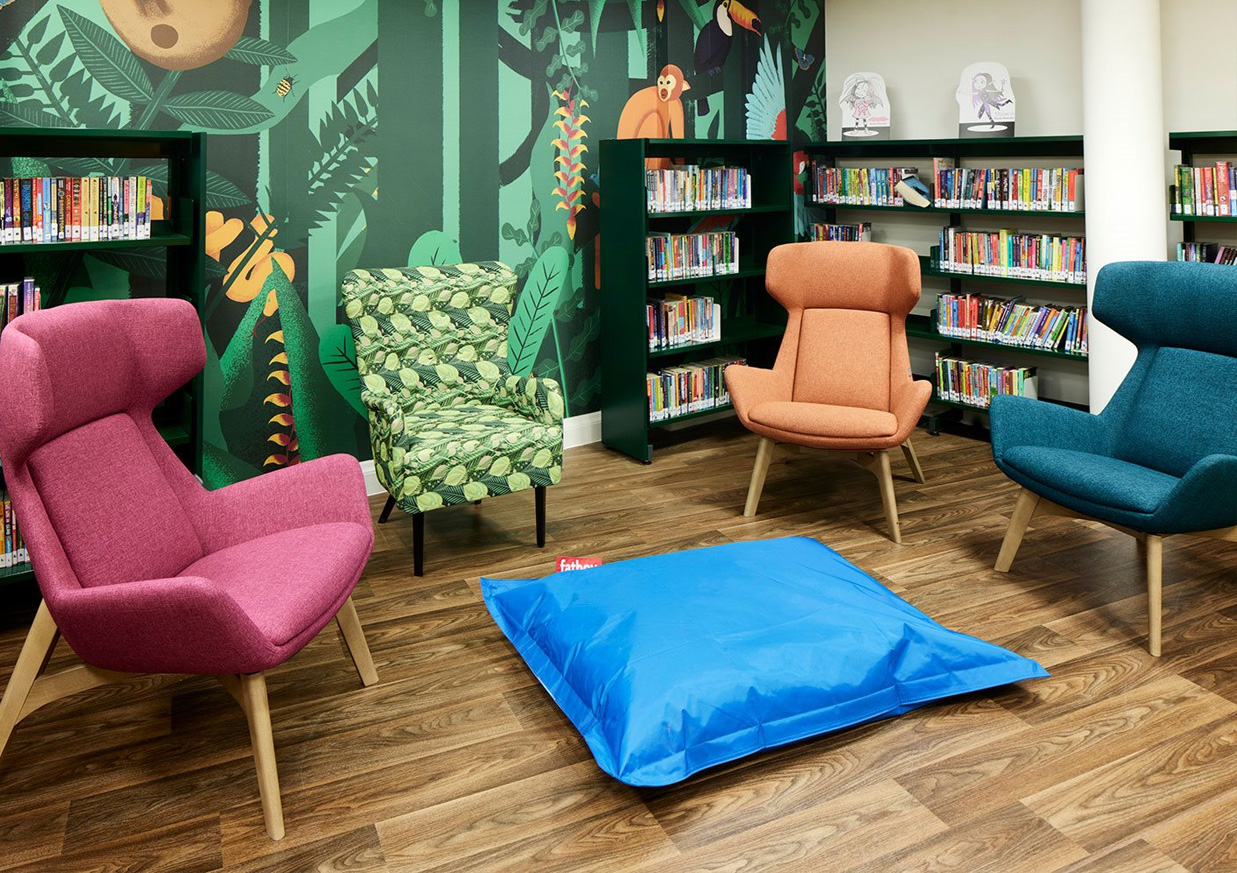
Patterned fabrics on chair depicting leafs.
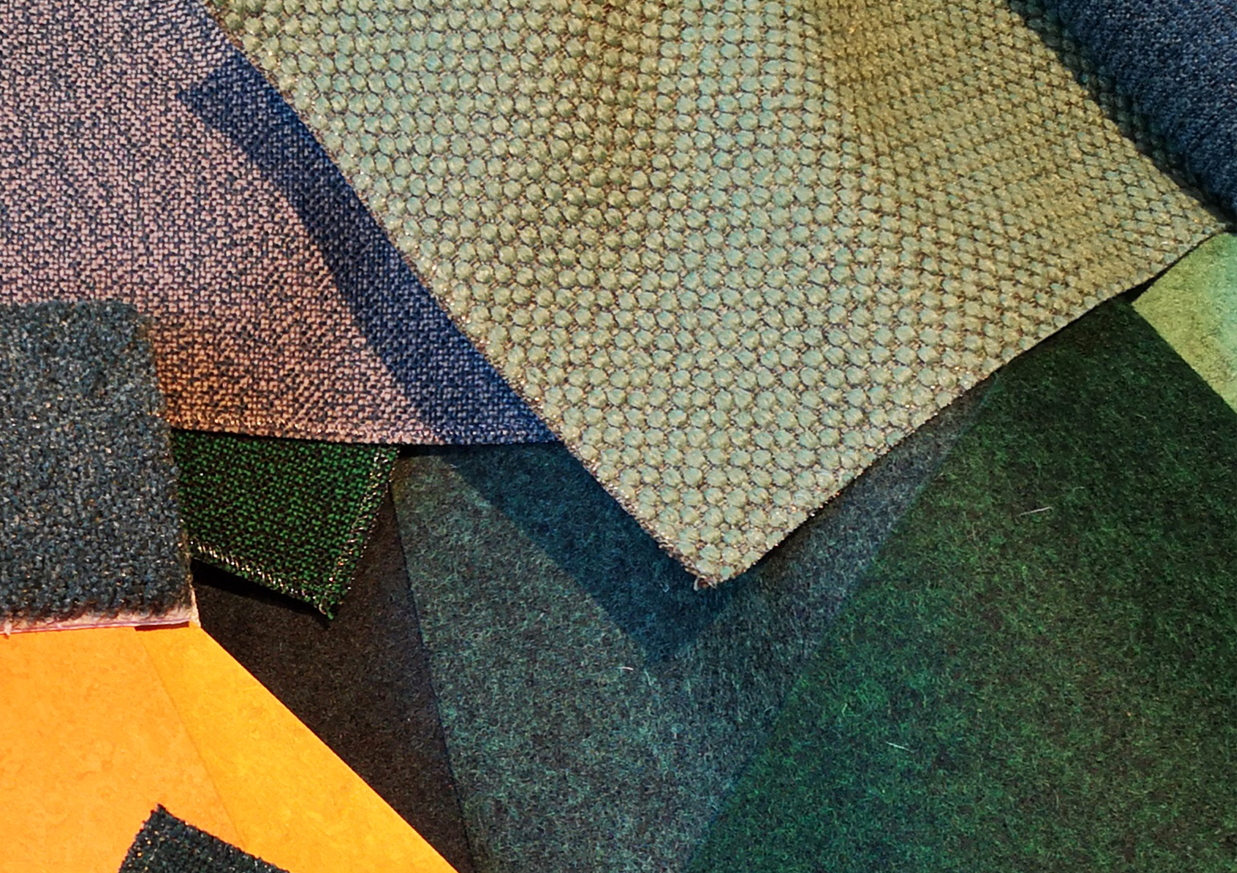
Fabrics in different shapes, fabrics, textures and colours to support nature.
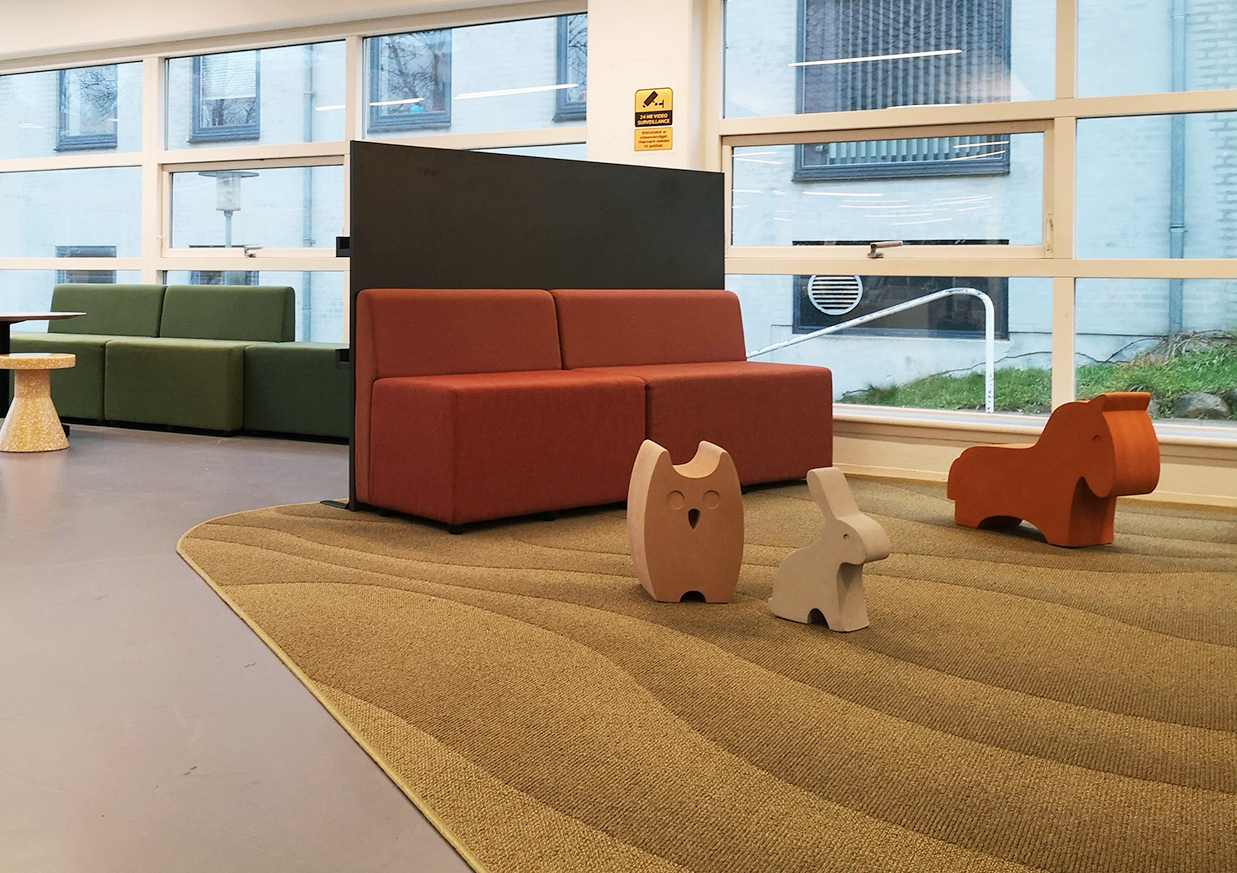
Rough and uneven texture make the surface beneath the animals seem real.
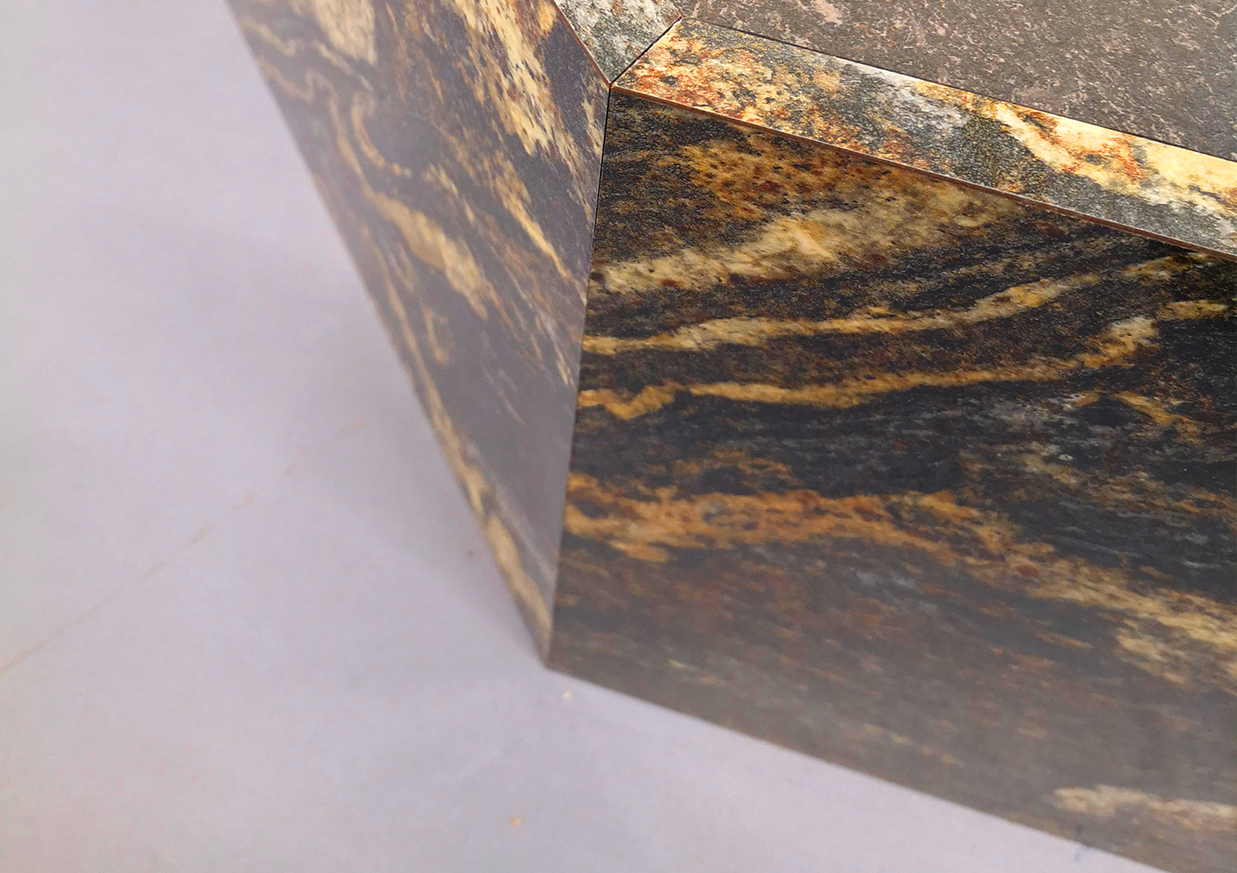
Smooth and hard surfaces resemble real life stones.
Similarly, sustainable fabrics like Oceanic from Camira also adds to the biophilic them by embracing nature in its most sustainable form. Oceanic is a fabric born of the SEAQUAL INITIATIVE designed to combat marine plastic pollution and achieve a waste free environment. It is created entirely from post-consumer recycled plastic - from debris floating discarded in our seas, used to make SEAQUAL® YARN, to bottles thrown away and destined for landfill. One small drop in the mission to clean both the earth and its ocean, this contemporary fabric is a recycled polyester with a purpose.
Oceanic is one example out of many fabrics with a sustainable footprint. In our selection of soft furniture, we focus on patterns as well as on sustainability.
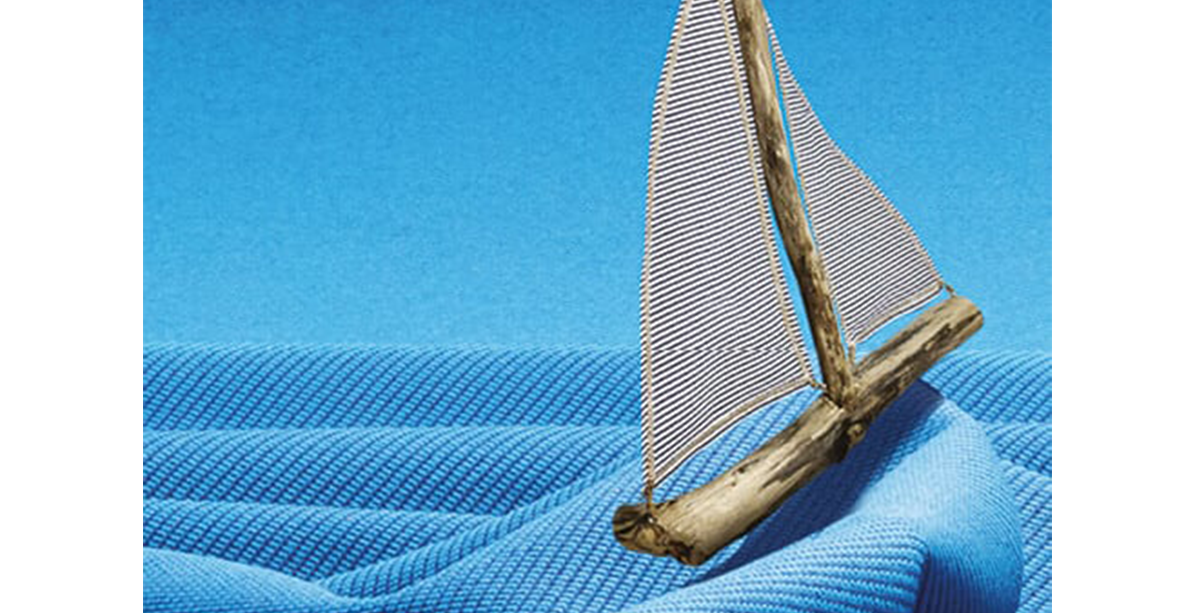
Oceanic fabric
More sustainable and certified materials:

Other projects
More biophilic themes
Need help?
We help bring out biophilic library design that seeks to satisfy our innate need to affiliate with nature.
If you have a current or upcoming project you would like to speak with us about, please don’t hesitate to contact us.


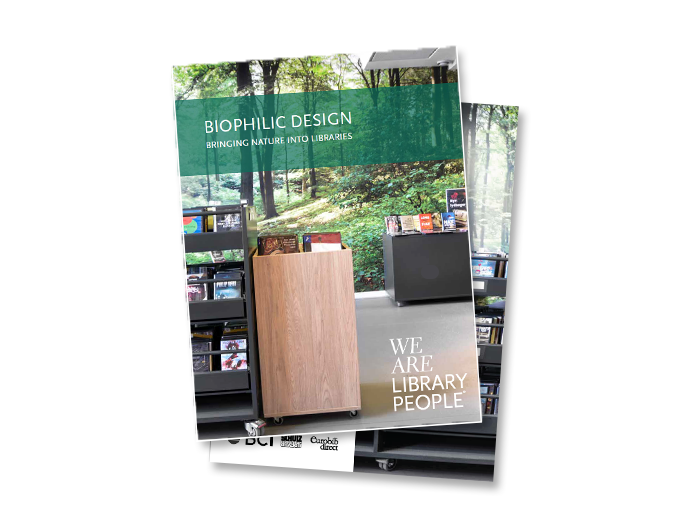
See our brochure
We have compiled inspirational projects and themes on biophilic library design in a brochure.
Get the complete overview.
 Shopping basket |
Shopping basket | 

